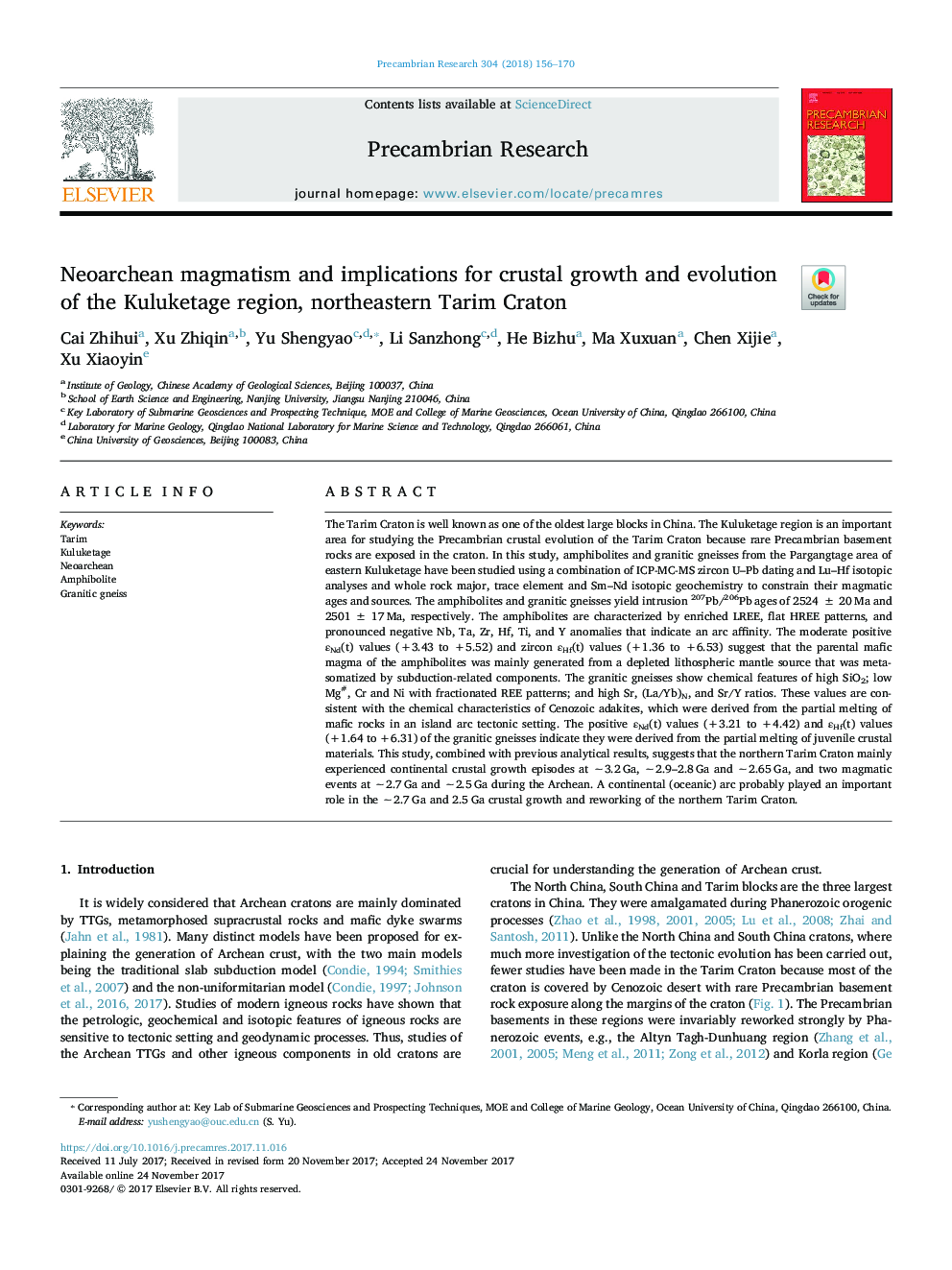| Article ID | Journal | Published Year | Pages | File Type |
|---|---|---|---|---|
| 8912705 | Precambrian Research | 2018 | 15 Pages |
Abstract
The Tarim Craton is well known as one of the oldest large blocks in China. The Kuluketage region is an important area for studying the Precambrian crustal evolution of the Tarim Craton because rare Precambrian basement rocks are exposed in the craton. In this study, amphibolites and granitic gneisses from the Pargangtage area of eastern Kuluketage have been studied using a combination of ICP-MC-MS zircon U-Pb dating and Lu-Hf isotopic analyses and whole rock major, trace element and Sm-Nd isotopic geochemistry to constrain their magmatic ages and sources. The amphibolites and granitic gneisses yield intrusion 207Pb/206Pb ages of 2524â¯Â±â¯20â¯Ma and 2501â¯Â±â¯17â¯Ma, respectively. The amphibolites are characterized by enriched LREE, flat HREE patterns, and pronounced negative Nb, Ta, Zr, Hf, Ti, and Y anomalies that indicate an arc affinity. The moderate positive εNd(t) values (+3.43 to +5.52) and zircon εHf(t) values (+1.36 to +6.53) suggest that the parental mafic magma of the amphibolites was mainly generated from a depleted lithospheric mantle source that was metasomatized by subduction-related components. The granitic gneisses show chemical features of high SiO2; low Mg#, Cr and Ni with fractionated REE patterns; and high Sr, (La/Yb)N, and Sr/Y ratios. These values are consistent with the chemical characteristics of Cenozoic adakites, which were derived from the partial melting of mafic rocks in an island arc tectonic setting. The positive εNd(t) values (+3.21 to +4.42) and εHf(t) values (+1.64 to +6.31) of the granitic gneisses indicate they were derived from the partial melting of juvenile crustal materials. This study, combined with previous analytical results, suggests that the northern Tarim Craton mainly experienced continental crustal growth episodes at â¼3.2â¯Ga, â¼2.9-2.8â¯Ga and â¼2.65â¯Ga, and two magmatic events at â¼2.7â¯Ga and â¼2.5â¯Ga during the Archean. A continental (oceanic) arc probably played an important role in the â¼2.7â¯Ga and 2.5â¯Ga crustal growth and reworking of the northern Tarim Craton.
Related Topics
Physical Sciences and Engineering
Earth and Planetary Sciences
Geochemistry and Petrology
Authors
Cai Zhihui, Xu Zhiqin, Yu Shengyao, Li Sanzhong, He Bizhu, Ma Xuxuan, Chen Xijie, Xu Xiaoyin,
